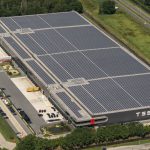
Want To Stay Current On Advancements In Solar Energy?
Contact Solar 360 today to learn more about the services we offer and how you can lower your energy bill.
During the early part of this year, the California Public Utilities Commission (or CPUC) enacted a new tariff dubbed NEM 2.0 to replace the original net energy metering (NEM) tariff. This development ensured that California enhanced its position as a leader when it comes to the adoption of solar.
At the moment, the San Diego Gas & Electric Company (and soon the Pacific Gas and Electric Company) is switching its clients to the new tariff structure, and this is great news for California. With NEM 2.0, customers will keep on enjoying stress-free savings using the residential rooftop solar.
Here is a brief summary of how NEM 2.0 works and why its enactment is good news for the solar market in sunny California.
The Basic Facts
NEM is a basic part of modern energy infrastructure, controlling a bidirectional flow of energy. In essence, it ensures customers can produce their own solar power and get a fair price from their utility company for the power they generate and do not use. The excess power is then uploaded to the grid.
The primary structure remains unchanged in California. Our clients will still continue to realize savings of up to 20 percent on their electricity bills by using clean solar power.
What Has Changed
The shift to NEM 2.0 is characterized by three important changes:
Firstly, net metering will no longer be capped. Previously, the CPUC placed a limit on the quantity of renewable energy produced in California that could qualify for NEM, but that limit has now been removed. This is very good news. California can be an example to the rest of the United States, and Californian families are assured that they can continue saving through solar.
Secondly, solar customers will from now onwards foot the bill for Non-Bypassable Charges ( or NBCs )on the power they import from their utility company. NBCs assist in the funding of vital community and state energy programs that benefit all the people of California. Solar customers will again save money on NBCs since they not be charged NBCs on the solar energy they produce and use directly.
Lastly, solar customers have the chance to manage their savings as California and most parts of the country shift to the Time-of-Use (or TOU) energy tariffs. These tariffs correlate energy prices with the energy demand. All parts of California will move to the TOU system in 2019. New customers of solar, subject to their utility company, will shift to TOU the moment they get their Permission-to-Operate (or PTO) from the company. Under TOU, the advantage of realizing extra savings because of using solar power becomes more apparent. Just like in the previous NEM tariff, solar power customers receive credits for the additional electricity that they generate and do not use. With TOU, when customers upload electricity to the grid during the peak periods, they are credited using peak rates. The same applies for off-peak periods, where off-peak rates are used. Basically, TOU enables customers to have more control. For instance, if a customer delays turning on the dryer or dishwasher until it is 8 pm when it is off-peak, this allows them to save even more money.
What the Future Holds for Residential Solar in California
NEM 2.0 enhances the long-term practicality of rooftop solar. The people of California can continue to adopt eco-friendly, low-cost solar power so as to immediately realize savings on their electricity bills.
NEM 2.0 indicates that energy policymakers and legislators in California acknowledge rooftop solar as a crucial part of the energy infrastructure in the state. The California Solar Initiative has established that over half a million Californians have solar today. When it comes to the entire nation, we have just passed the one million solar homes mark. California has always led when it comes to solar adoption, and this is expected to continue with NEM 2.0.
We are convinced that rooftop solar is a key component of a modern, national energy infrastructure. In collaboration with innovative regulators and utility companies, we are smoothing the path for an enduring, bright future for low-cost solar energy throughout the area.
If you are wanting to slash your bills by at least 50 percent, give Solar 360 a call. We’ll answer all of your questions and get you started down the road to solar power freedom.









